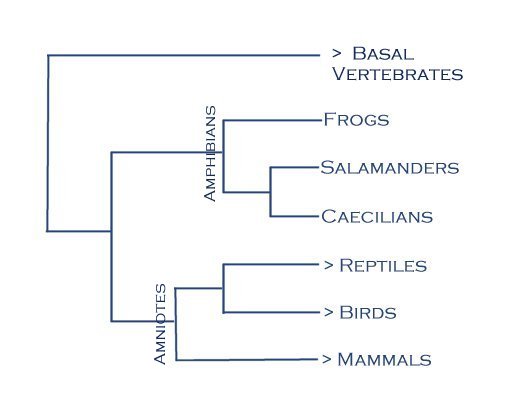Where did it come from?!
The American Bullfrog's
scientific name, Rana catesbeiana, comes from the Latin
word rana, which means frog, and catesbeiana for its
identifier Mark Catesby, an English naturalist.
Here is a complete classification of the
American Bullfrog with listed attributes that give reason to why the bullfrog is
put into each category.
Domain: Eukarya- multicellular,
true nuclei
Kingdom: Animalia- no cell wall,
heterotrophic, motile at some stage
Phylum: Chordata- notochord, dorsal
nerve chord, pharyngeal pouches, thryroid gland, postanal tail
Class: Amphibia- "both ways of
life," tetrapod, bony
skeleton, moist skin, respiration via lungs and skin, require water for
reproduction,
Order: Anura- Greek roots= "-an"
meaning without; "-oura" meaning tail
Family: Ranidae- true frogs,
aquatic or live near water, smooth-moist skin, large powerful legs, webbed feet
Genus: Rana- lack warts,
excellent jumpers, large, mostly green or brown, males call
Species: Rana catesbeiana-
top of page

The phylogenetic tree below shows a broader perspective of where Amphibians, specifically frogs, fit within the vertebrates. Of the vertebrates, you can separate the animals into two groups: Amphibians and Amniotes. The main difference between the two is the amniotic egg. The Amphibians' eggs lack shells, whereas the Amniotes have a usually hard or leathery shell that protects the embryo inside from arid and dry temperatures. Frogs differ from Salamanders and Caecilians due to the fact that they do not have tails as adults.

WhoZoo (http://whozoo.org)